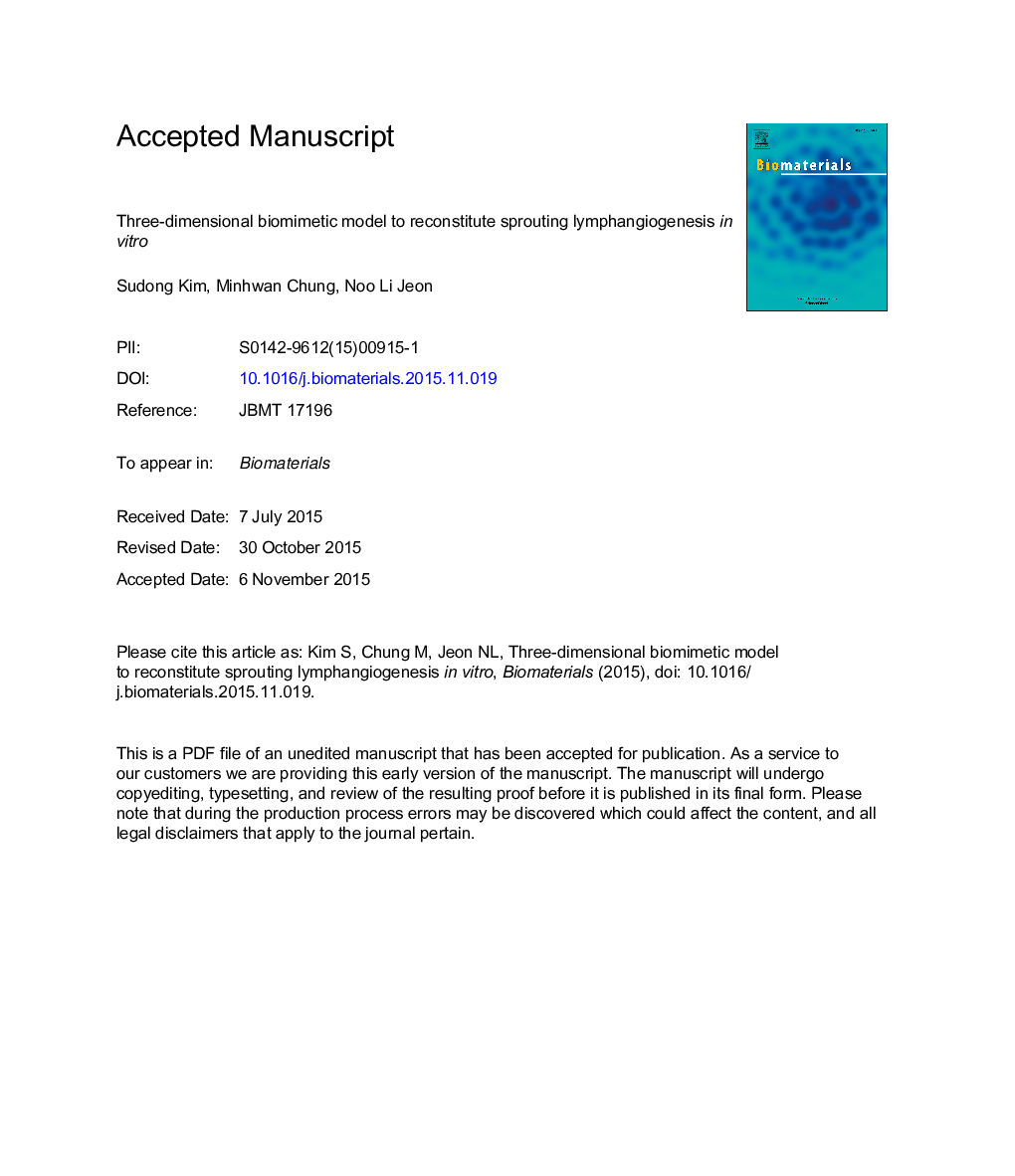| Article ID | Journal | Published Year | Pages | File Type |
|---|---|---|---|---|
| 6485205 | Biomaterials | 2016 | 38 Pages |
Abstract
Formation of new lymphatic vessels, termed lymphangiogenesis, is central for diverse biological processes during development, inflammation and tumor metastasis. However, reliable in vitro model is still under demand for detailed elucidation of how sprouting lymphangiogenesis is initiated and coordinated. Here, we describe a microfluidic platform optimized for close reconstitution of lymphangiogenesis, achieved by on-chip integration of salient constituents of lymphatic microenvironment found in vivo. With flexible and precise control over the factors that include biochemical cues, interstitial flow (IF), and endothelial-stromal interactions, we found that orchestrated efforts of multiple environmental factors are necessary for robust lymphatic sprouting in 3D extracellular matrix. Especially, we demonstrate that IF serves as a central regulatory cue which defines lymphangiogenic responses and phenotypes of lymphatic endothelial cells. When synergized with pro-lymphangiogenic factors, IF significantly augmented initiation and outgrowth of lymphatic sprouts toward upstream of the flow while suppressing downstream-directed sprouting. In an appropriate synergism, lymphatic sprouts exhibited structural, molecular signatures and cellular phenotypes that closely approximate sprouting lymphatic neovessels in vivo, and precisely reflected the modulatory effects of pro- and anti-lymphangiogenic stimuli. Our study not only reveals critical but unappreciated role of mechanical cue that regulates lymphangiogenic sprouting, but also provides a novel biomimetic model that may leverage further biological studies as well as phenotypic drug screening.
Related Topics
Physical Sciences and Engineering
Chemical Engineering
Bioengineering
Authors
Sudong Kim, Minhwan Chung, Noo Li Jeon,
